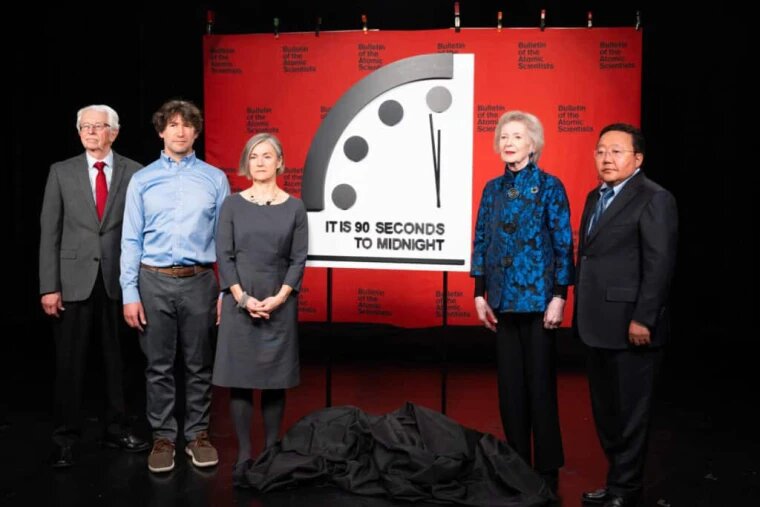The Doomsday Clock is a symbolic representation of the proximity of global catastrophe, with “midnight” representing the end of the world. The clock’s current position at 90 seconds to midnight is largely a reflection of the current political challenges. And as well as environmental challenges facing the world. The people who run the clock have cited Russia’s war in Ukraine as one of the main reasons for this. Due to the potential use of nuclear weapons and the conflict’s encouragement of continued dependence on fossil fuels in Europe. This is the first time that the announcement of the clock’s movement broadcasted in Russian and Ukrainian. As well as in English. To bring more attention to the dire forecast and to encourage action to address these global challenges.
The clock’s position is determined by the Bulletin’s Science and Security Board, which considers various global challenges. Also, the clock’s position adjust as needed to reflect changes in the level of risk from these threats. The clock’s position was 100 seconds to midnight in 2020.

What is the Doomsday Clock
The Doomsday Clock is a symbol, designed by the Bulletin of the Atomic Scientists. It represents the potential of the world to reach global catastrophe. In addition to that, it is a metaphor for how close humanity is to destroying itself. With the help of nuclear weapons and other weapons of mass destruction.
The clock set at a quarter past midnight. It represents the closest the world has come to the brink of global disaster since the clock’s inception in 1947. Further, it was created as an analogy for the threat of nuclear war spurred by the Cold War arms race between the United States and the Soviet Union. The scientists behind the clock included some who had participated in the Manhattan Project. A project that produced the world’s first atomic bomb.
How Does it Work?
The clock’s position determines by the Bulletin of the Atomic Scientists’ Science and Security Board. They assess trends. Such as the number of nuclear weapons in the world, the rate of sea-level rise, and government efforts to mitigate these challenges. Moreover, the clock’s position adjust as needed to reflect changes in the level of risk from these threats. The setting of the clock is not based on a quantitative model. But on the judgment of experts on whether humanity is safer or at greater risk compared with the previous year. And with prior settings in the clock’s history.
Critics have dismissed the Doomsday Clock as fearmongering or questioned its usefulness and methodology. Some researchers have argued that it is not an accurate measurement of actual risk. But rather a reflection of the “strong feeling of urgency” about the risks among the team who operate it.
” It is 90 seconds to midnight”
The Doomsday Clock is set to 100 seconds in January 2020, the first time it passed the two-minute mark since its invention, and it stayed there until Tuesday’s update. The Bulletin of the Atomic Scientists has also cited the spread of cyberattacks and disinformation in recent decisions. The clock was most distant from “midnight” in 1991 when it turned back to 17 minutes after the Cold War was over officially.
The recent update is due to the escalating conflict in Ukraine, which has led to rising tensions between Washington and Moscow and shelling near Europe’s largest nuclear power plant. The Bulletin is emphasizing the need to contain the crisis and find a way to de-escalate tensions between the two countries that control the largest nuclear arsenals in the world.
What Happens When the Clock hits Midnight?
According to Bronson, we don’t think we’ll ever be able to set it to midnight because by then we won’t be able to. She also added that We won’t be able to respond with any better tools.
The countdown can get trickier as we get closer to climate change. Because we worried about a slow-moving catastrophe, Bronson asked, “How do we feel about the clock? The decisions we make now will be evaluated in 30 years. The timepiece, in her opinion, will also act as a warning and a comfort by reminding people that “we have turned the clock back in the past, and that we are capable of doing.”

































